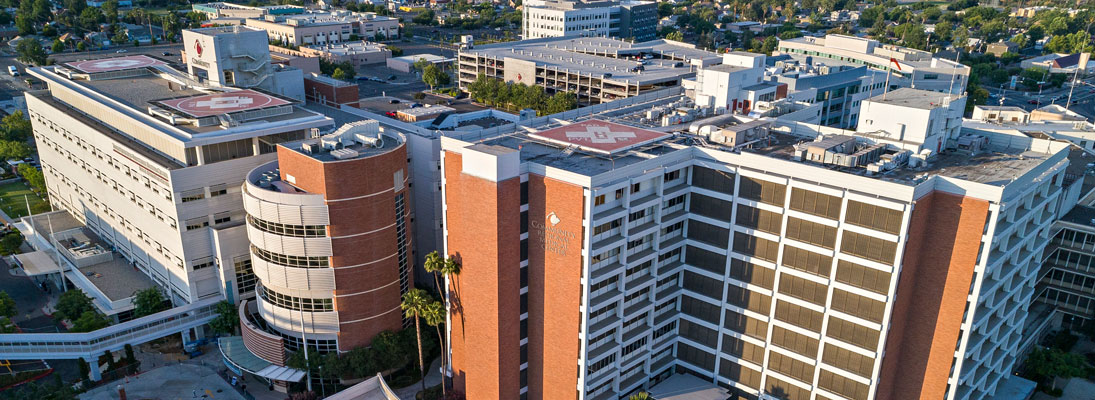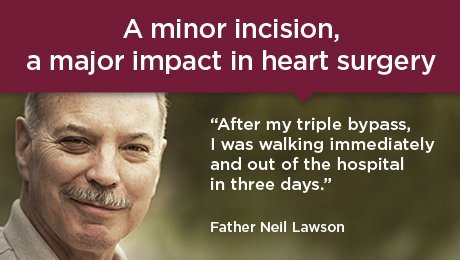
Specialized surgical procedures
At Community Regional Medical Center, we understand that when you need a heart surgeon, you want to know you’re in good hands.
Patients can take comfort in the fact that our renowned surgeons are conducting the most advanced cardiac procedures in the Valley.

We offer the following procedures to protect your heart and health:
Uses a special device to stabilize the section of the heart being operated on, without stopping the heart. This reduces the risk of complications associated with stopping the heart during surgery.
May be used for patients with significant blockages and narrowing of their heart arteries (coronary artery disease). The procedure reroutes blood around clogged arteries to improve blood and oxygen flow to the heart.
Is a minimally invasive alternative when cardiac bypass surgery isn’t an option. The bypass graft involves a smaller incision than surgery and avoids cutting into bone. Patients tend to experience shorter recovery periods, returning to their normal routine sooner than they would with surgery. Criteria for receiving the graft are different than surgery and not all patients are candidates.
Is commonly offered as an alternative to qualified, but waiting candidates for heart transplant. The LVAD is a small pump implanted into the upper part of the abdomen that helps circulate blood throughout the body. The procedure presents a high survival rate and improved quality of life for patients in need of a heart transplant or suffering from heart failure.
Disrupts electrical signals in the heart that cause an erratic heartbeat (arrhythmia). Surgeons make several incisions in the atria, creating scar tissue to stop the unwanted electrical impulses that cause atrial fibrillation or atrial flutter.
Offer alternatives for patients with severe symptoms of heart failure that can’t be controlled by medication. A biventricular pacemaker is a relatively new option for patients. This particular device uses electrical pulses sent by wires into the left and right ventricles to create a more normal heartbeat.
Help to secure the aortic wall in the event of an aortic aneurysm (a weakening or bulging on the wall of the aorta)
- Endovascular dissection repair resolves acute Type B aortic dissection complicated by rupture or malperfusion syndrome. In the procedure, a stent is placed in the aorta to shrink the walls down after an aneurysm.
- Hybrid total arch repair grafts multiple stents in the brachiocephalic arteries, providing blood flow to the upper extremities, neck and head. The procedure is primarily an alternative for patients who are otherwise considered prohibitively high risk for traditional open arch repair due to a saccular arch aneurysm.
- Reoperative aortic root reconstruction can help improve the life expectancy of patients who have previously received an aortic valve replacement.
- Thoracic aortic stent graft repair prevents the aorta from rupturing by grafting a stent inside the aorta for support. The procedure is for patients with transverse arch and descending thoracic aortic aneurysms.
- Valve-sparing aortic root replacement helps patients with aortic root and ascending aorta aneurysms. The procedure keeps the patient’s aortic valve and avoids the need for lifelong use of blood-thinners (anticoagulants).
Is a minimally invasive treatment for angina aimed at improving blood flow to areas of the heart that could not be treated by angioplasty or surgery. A laser creates small channels into the heart muscle and into the heart’s lower left chamber. This procedure may be combined with coronary artery bypass surgery in some patients.
Is necessary when one or more heart valves aren’t working properly, often as a result of regurgitation or stenosis (a narrowing of the valve).
Annuloplasty repairs the ring-like part of the valve by attaching a ring of plastic, cloth or tissue around it, restoring normal blood flow through the valve.
Annuloplasty repairs the ring-like part of the valve by attaching a ring of plastic, cloth or tissue around it, restoring normal blood flow through the valve.
Is primarily performed to replace diseased aortic or mitral heart valves. The procedure replaces a defective valve with a mechanical or biological valve.
Transcatheter Aortic Valve Replacement (TAVR) is a minimally invasive procedure used to treat aortic stenosis when a patient is not eligible for open-heart surgery. A new valve made from wire-mesh and tissue is delivered via catheter to replace the malfunctioning aortic valve.
Community Regional Medical Center is the only hospital in the region to offer this life-saving procedure. To learn how you or a loved one can seek relief from aortic stenosis, call (559) 459-7492 or email heart@communitymedical.org.
Read the brochure.
We use cookies and other tools to optimize and enhance your experience on our website. View our Privacy Policy.
